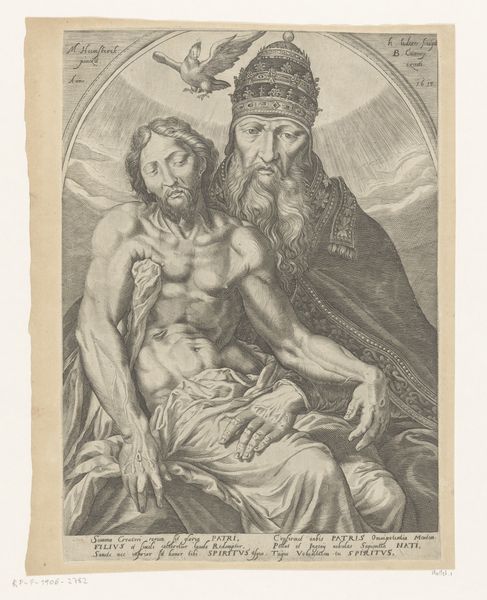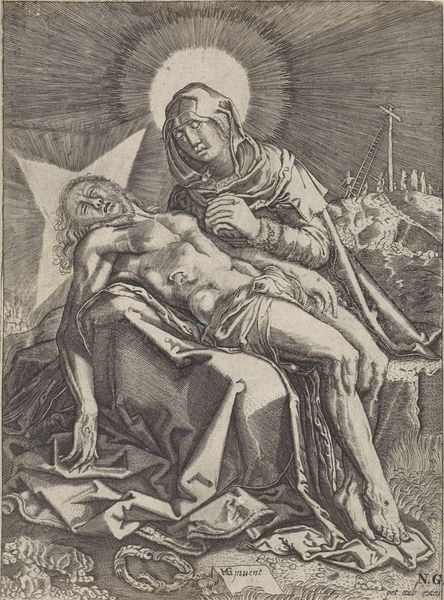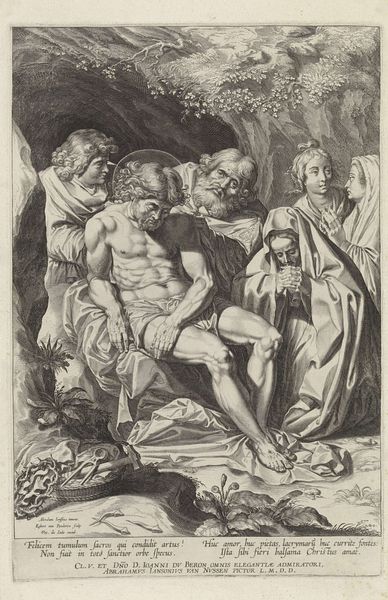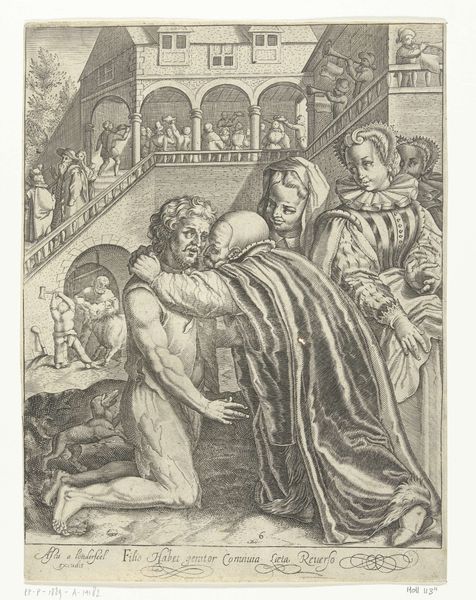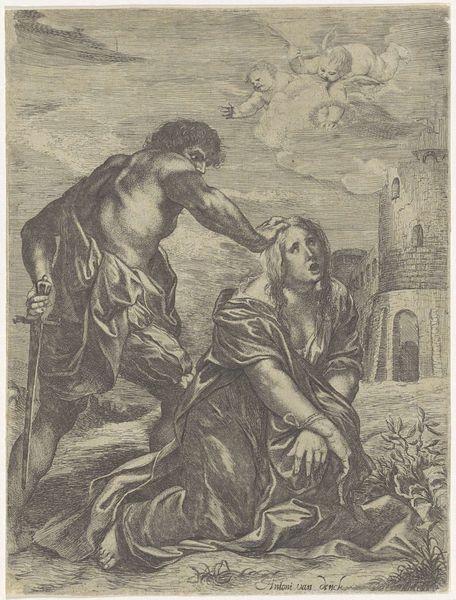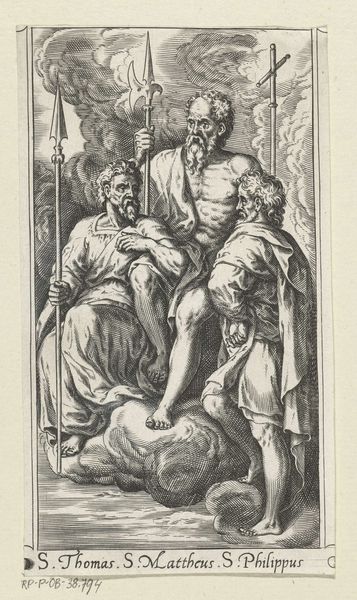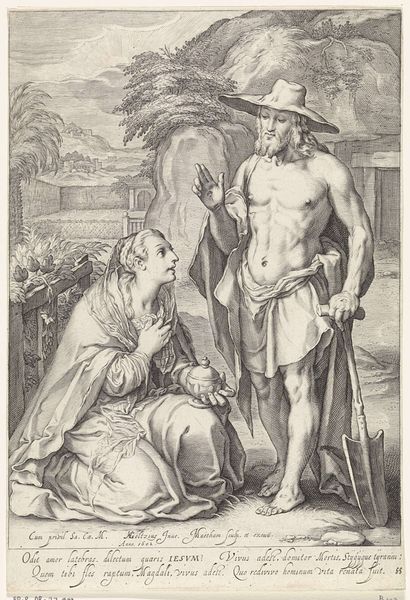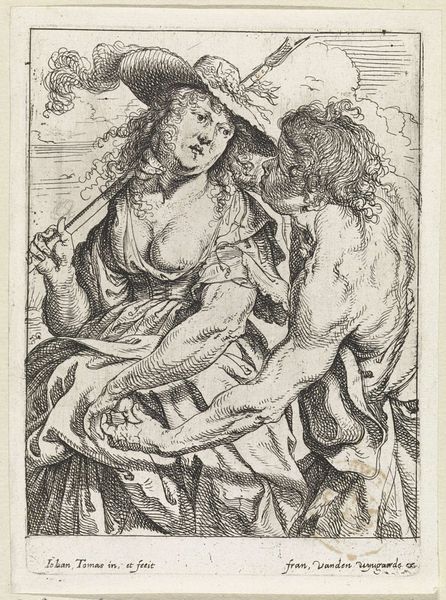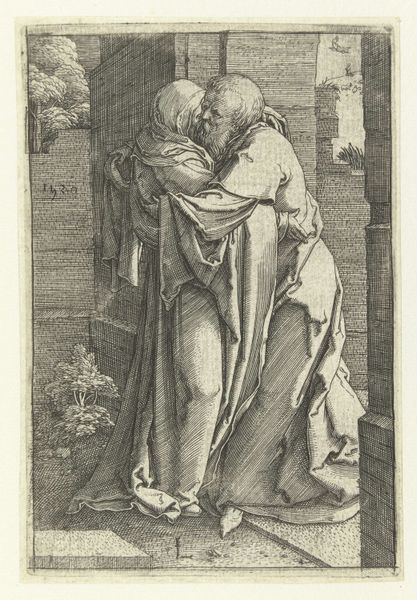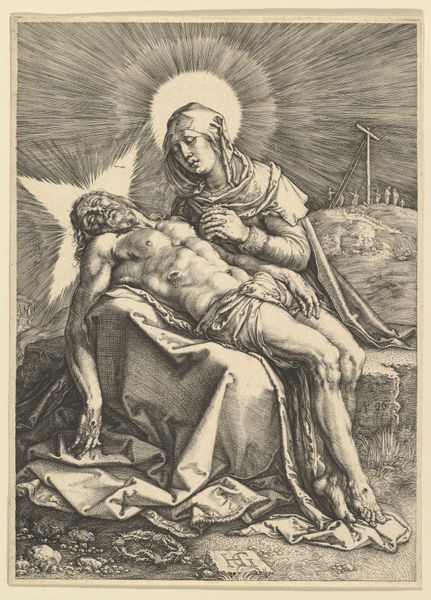
Dimensions: height 107 mm, width 72 mm
Copyright: Rijks Museum: Open Domain
Curator: Here we have Karel van Mallery’s “Pieta”, an engraving that was produced sometime between 1581 and 1612, now residing here at the Rijksmuseum. Editor: The image hits me like a somber lullaby. There's an incredible gentleness in the etched lines despite the inherent tragedy of the subject. What grabs you first about the process? Curator: The clear, linear style typical of engravings from this period really draws attention to the craftsmanship involved. We have an intimate moment, made reproducible through a very particular kind of labor. Note the inscription— it’s part of the printing process but also integral to the artwork itself, as a component of its historical creation. Editor: Yes, this reproducible image spreads grief and intimacy! The way Mary's hands cradle Christ's body and face seems so tender, like she’s trying to absorb his pain. The artist masterfully uses light and shadow. Curator: Precisely! And it’s worth remembering that engravings like these were part of a larger visual culture of devotion. Prints such as this facilitated the spread of religious iconography. It enabled the marketisation of faith through readily reproducible imagery and facilitated a visual language that underpinned Counter-Reformation piety. Editor: Exactly. Beyond its socio-historical importance, it transcends into human connection and that quiet agony of loss, capturing both. Curator: Ultimately, it highlights the labor that goes into the making of these images, inviting us to contemplate how materials, artistry, and commerce intersect. Editor: Right, it does prompt deeper thought. Mallery captured raw emotion by translating grief into palpable ink. The Pietà leaves us reflecting not only on artistic mastery, but also on our mortality.
Comments
No comments
Be the first to comment and join the conversation on the ultimate creative platform.
